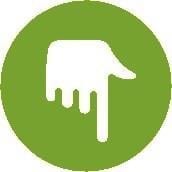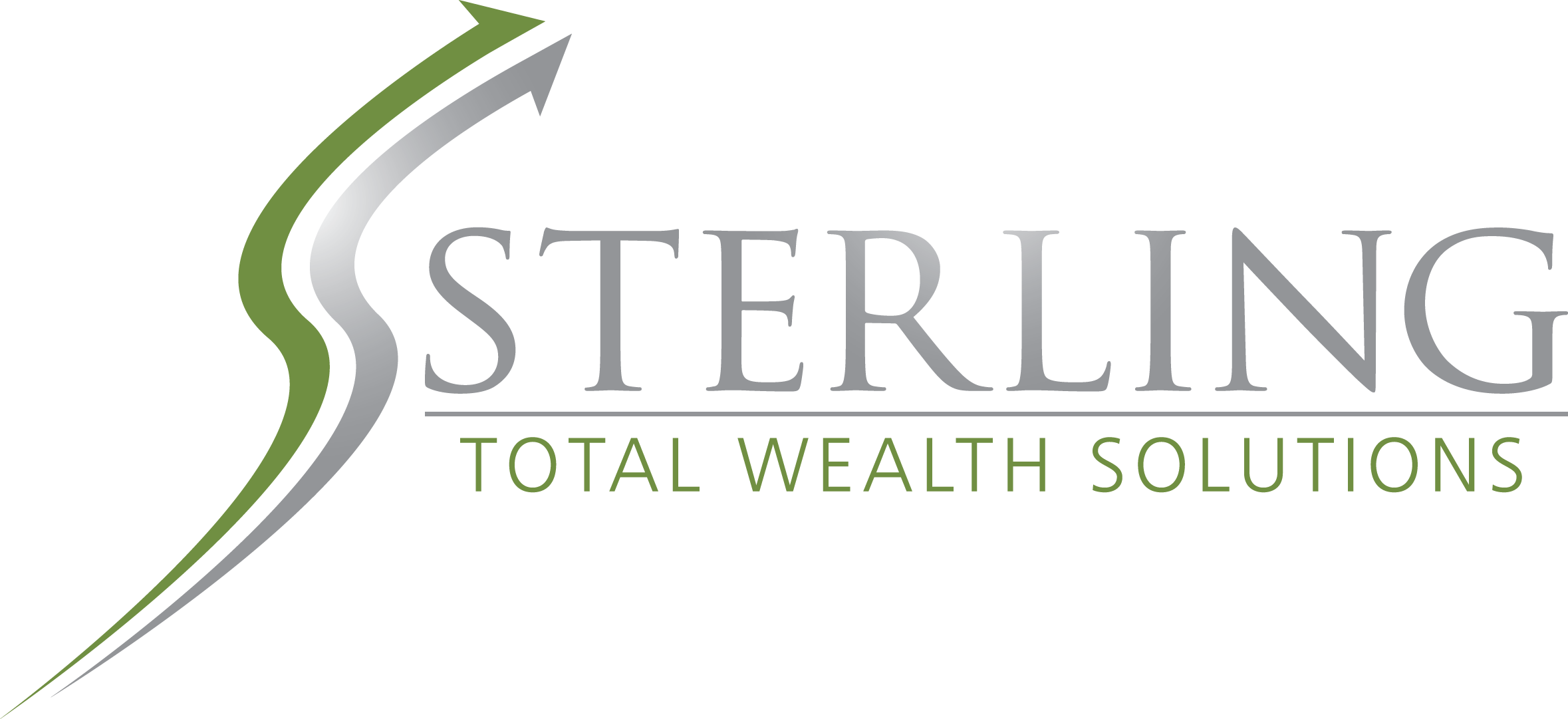In this month’s recap: The CARES Act moves to assist Americans quarantined by COVID-19, providing relief with a $2T stimulus package; markets worldwide react to coronavirus-related volatility.
Monthly Economic Update
Monthly Economic Update | Presented by Sterling Wealth Advisors | April 2020
The Coronavirus Aid, Relief, and Economic Security (CARES) Act has been signed into law, bringing relief to millions of Americans, most of whom are expected to be quarantined for at least another month. The White House has asked Americans to continue “socially distancing” during the month of April. Volatility continued in International markets, even as the COVID-19 (novel coronavirus) reached the United States. The Standard and Poor’s 500 (S&P 500) Index was down 12.51% for March.1
At the end of March, the CARES Act was signed into law, releasing $2 trillion in relief to millions of Americans and U.S. businesses. This includes $1,200 checks to American taxpayers ($2,400 to married couples) and four months of additional $600 payments to those claiming unemployment.2,3
February’s unemployment rate rose a point to 5.6% (U-6 Unemployment rose to 7%), prior to the St. Louis Fed’s declaration that unemployment could jump to 32.1%, post-coronavirus. The 47 million out-of-work Americans would be the highest number seen since 1948. Michigan consumer sentiment numbers dropped to 89.1 for March, while February’s consumer spending stayed at 0.2%. February retail sales dropped to -0.5% from the previous month’s 0.6%. The ISM Purchasing Managers Index (PMI) dropped to 50.1 for February with new orders sinking to 45.9. The ISM Non-Manufacturing PMI rose to 57.3.4,5,6
GLOBAL ECONOMIC HEALTH
China, where the first widespread outbreak of COVID-19 was reported, has reported a considerable drop in cases (though, it is difficult to verify their numbers). However, the loss of workers due to illness and the changes in demand worldwide may have a long-term effect on China’s gross domestic product (GDP). The overall drop of 3.7% in GDP, crossed with an upswing in China’s manufacturing PMI to a score of 52, indicate a country that has come back to work.7,8,9
Europe and the United Kingdom have also been hit heavily by COVID-19, with Italy and Spain seeing a large number of cases. Aggressive actions to subsidize employment in Europe are projected to stem unemployment claims to some degree. Meanwhile, inflation in the 19-country euro area has dropped to 0.7%.10,11
WORLD MARKETS
There were several markets sinking in March, including the U.K.’s FTSE 100 (-13.81%), the German Dax (-16.44%), the French CAC 40 (-17.21%), Japan’s Nikkei 225 (-10.53%), Australia’s All-Ordinaries (-21.51), Brazil’s Bovespa (-29.90), Mexico’s Bolsa (-16.38%), Hong Kong’s Hang Seng (-9.67), China’s Shanghai Composite (-4.51), Malaysia’s KLCI (-8.89), South Korea’s Kospi Composite (-11.69), and Russia’s RTS (-21.95).12,13
The MSCI EAFE Index (which measures performance across developed stock markets outside North America) took a 14.77% fall.14
COMMODITIES MARKETS
Energy commodities fell in March, including light crude (-55.17%), heating oil (-33.10%), natural gas (-3.12%), and unleaded gas (-59.45%). The drop in oil prices was attributed to Saudi Arabia and Russia, who show no signs of compromising in their standoff over oil supply.15
Meanwhile, other commodities stepped into negative territory in March, such as corn (-6.75%), cocoa (-18.88%), cotton (-16.65%), and sugar (-25.80%). The exceptions for March were soybeans (+0.11%), wheat (+7.38%), and coffee (+7.41%).15
Metals also had a difficult month, with March numbers diminishing for gold (-0.74%), silver (-14.75%), platinum (-17.13%), and copper (-12.96%). The U.S. Dollar Index closed at 98.95, up 1.62%.15,16
REAL ESTATE
Freddy Mac’s Primary Mortgage Market Survey for March 26 revealed the mean interest rate on a 30-year home loan as 3.5%, up 0.05% since the end of February. The 15-year home loan sank 0.03% to 2.92%.17
Existing home sales rose to 6.5% for February, with 5.77 million homes available. New home sales fell back 4.4% for February, with 765,000 houses on the market. Housing starts also pulled back 1.5%. Building permits stepped back 5.5%.4
TIP OF THE MONTH

Anyone who starts a business needs an operational strategy. A good one includes metrics, a day-to-day plan detailing who will do what, and an assessment of external and internal risks.
March saw the end of the worst quarter for stocks in U.S. history. The Dow Jones Industrial Average (DJIA) closed at 21,917.16. The Standard and Poor’s 500 (S&P 500) ended the month at 2,584.59, while the NASDAQ Composite Index closed at 7,700.10.18
| MARKET INDEX | Y-T-D CHANGE | 1-MO CHANGE | 2019 |
| DJIA | -23.20 | -13.72 | +22.34 |
| NASDAQ | -14.18 | -10.12 | +35.23 |
| S&P 500 | -20.00 | -12.51 | +28.88 |
| BOND YIELD | 3/31 RATE | 1 MO AGO | 1 YR AGO |
| 10-YR TREASURY | 0.70 | 1.13 | 2.41 |
Sources: Bloomberg.com, Barchart.com, treasury.gov – 00/00/00
Indices are unmanaged, do not incur fees or expenses, and cannot be invested into directly. These returns do not include dividends. 10-year Treasury real yield = projected return on investment, expressed as a percentage, on the U.S. government’s 10-year bond.
QUOTE OF THE MONTH

“Adversity is the first path to truth.”
Lord BYRON
Here are some of the economic news items for investors to consider in April: the March Institute for Supply Management Non-Manufacturing Index (4/3), March’s Consumer Price Index (4/10), March’s Producer Price Index (4/9), the initial April Consumer Sentiment Index from the University of Michigan (4/9), March retail sales (4/15), March housing construction activity (4/16), March existing home sales (4/21), March new home sales (4/23), March durable goods orders (4/24), March personal spending and income and the final April University of Michigan Consumer Sentiment Index (4/24), the estimate of first-quarter gross domestic product from the Bureau of Economic Analysis (4/29), and then the Conference Board’s March Consumer Confidence Index and the latest S&P/Case-Shiller Home Price Index (4/28). NOTE: Some releases may be delayed or rescheduled in the wake of the COVID-19 epidemic.
THE MONTHLY RIDDLE

While most English words can be pluralized by adding the letter S on the end, there is one word that can be pluralized just by the addition of the letter C. What is it?
LAST MONTH’S RIDDLE: What gets broken without being held?
ANSWER: A promise.
Securities offered through Registered Representatives of Cambridge Investment Research, Inc., a Broker/Dealer, Member FINRA/SIPC. Advisory services offered through Cambridge Investment Research Advisors, Inc., a Registered Investment Advisor. Sterling Wealth Advisors and Cambridge are not affiliated.
To learn more about Sterling Wealth Advisors, visit us on the web at www.sterlingwealthadvisorstx.com
Know someone who could use information like this? Please feel free send us their contact information via phone or email. (Don’t worry – we’ll request their permission before adding them to our mailing list.)
1 – CNN.com, March 31, 2020.
2 – CNBC.com, March 30, 2020.
3 – Forbes.com, March 29, 2020.
4 – Investing.com, March 31, 2020.
5 – USA Today, March 31, 2020.
6 – MarketWatch, March 31, 2020.
7 – CNBC.com, April 1, 2020.
8 – Nikkei Asian Review, March 31, 2020.
9 – Forbes.com, March 31, 2020.
10 – CNBC.com, March 30, 2020.
11 – Eurostat, March 31, 2020.
12 – New York Times, March 31, 2020.
13 – Barchart.com, March 31, 2020.
14 – MarketWatch.com, March 31, 2020.
15 – CNN.com, March 31, 2020.
16 – MarketWatch.com, March 31, 2020.
17 – Freddie Mac, March 31, 2020.
18 – Bloomberg.com, March 31, 2020.
